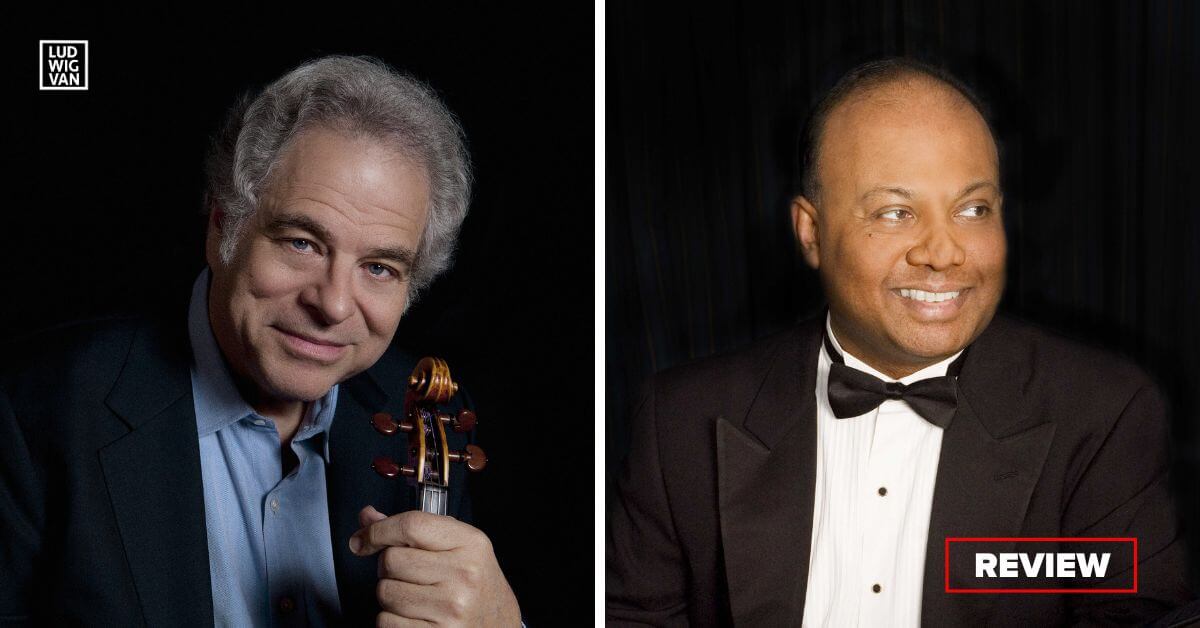
Leclair: Violin Sonata in D Major, Op. 9 No. 3; Beethoven: Sonata for Violin and Piano No. 9 in A Major, Op. 47 “Kreutzer”; Schumann: Fantasiestücke, Op. 73 & works announced from the stage. Itzhak Perlman, violin, Rohan De Silva, piano. May 16, 2024, Roy Thomson Hall.
How do you describe a violin virtuoso and conductor whose career has spanned over 65 years, who helped popularized classical music through appearances on popular TV shows and Hollywood soundtracks, played for presidents and royalty, and has received numerous awards, including 16 Grammys, four Emmys and the Presidential Medal of Freedom?
Itzhak Perlman is a legend, a rockstar in the classical world. At the age of 78, he still maintains an active schedule of performing and speaking engagements, in addition to nurturing young violinists in his own Perlman Music Program.
For many years before the pandemic, Perlman regularly performed with the Toronto Symphony Orchestra, but last night, he gave an intimate recital with his long-time collaborator, pianist Rohan De Silva, at Roy Thomson Hall, to an almost full house.
The formal program consisted of three violin sonatas by Leclair, Beethoven and Schumann. Leclair’s Violin Sonata in D Major seemed to be merely a warm-up exercise for Perlman, as he executed the trills, arpeggios and double or triple stops in a rather nonchalant manner. The cheerful, dance-like fourth movement Tambourin: Presto has the feel of a fiddler playing to a rowdy, Irish-dancing crowd in a bar. This was one of several sections where Perlman could have dialed up the vibrancy with more crescendos and urgency.
Beethoven’s Sonata for Violin and Piano No. 9 in A Major, more commonly known as the “Kreutzer,” was the most difficult of the three pieces, filled with rapid fire passages at the top of the instrument’s range. The first movement alternated between slow and fast tempos. Perlman dazzled with his technical prowess, his fingers darting nimbly with ease. He was so comfortable and in control, you could not see him even breaking a sweat. The second slow movement was graceful and introspective. The final movement opened to a galloping rhythm, the music washed over like warm currents in a calm sea when more waves were called for.
Perlman’s playing left me yearning for more shifting colours and moods. His sound lacked the warm shimmer he is known for. The problem herein was his style of playing, which is now more suited to a smaller, more intimate venue with warmer acoustics (which Roy Thomson Hall is not.) The Beethoven was as much a showcase for the piano, and De Silva was technically superb in every way, even though there were times he overpowered the violin. It would be remiss to not give full accolades to this brilliant pianist, whose intricate playing was full of colours and nuance at the same time.
Schumann’s “Fantasiestücke” is a set of three interconnected pieces that was played at his own memorial service in 1856, by none other than Johannes Brahms on the piano, along with violinist Joseph Joachim. Again, Perlman played with a quiet passion and conveyed a spirit of nostalgia. Although his fortes lacked volume, his artistry was undeniable when he played pianissimo. Where he lacked fire and vigour, he made up for with his mature and flawless technique.
The real fireworks began with the informal program, which Perlman announced from the stage, along with some light banter that clearly delighted the audience. Perlman sported a stack of papers that he joked was the list of pieces he has played in Toronto since 1912. He then rummaged through the list and gave the appearance of randomly choosing six short pieces for the rest of the evening, beginning with two pieces by Smetana and one by Tchaikovsky.
These were played with more of his signature silky sound and remarkable intonation. His rendition of Fritz Kreisler’s “Tambourin Chinois,” the fastest tempo he played last night, was his virtuosity in full display. This was followed John William’s theme to “Schindler’s List,” possibly Perlman’s best-known piece. Audiences may have been somewhat disappointed by this live version, which he took at a faster pace and did not have the same pathos and depth that warmed his famous recording.
Perlman concluded the evening with the exciting Brahms’ “Hungarian Dance No. 1.” Even if there was slight incongruence between the violin and the piano, and a lack of fiery passion, it did not matter to the audience, who leapt to their feet in prolonged standing ovations.
The program note fittingly describes Itzhak Perlman as “the reigning virtuoso of the violin.” Even though the world is full of younger violin virtuosos who play with more flair and gusto, Perlman’s playing is timeless and true to his heart. It was a privilege for Toronto audiences to witness this living legend who, despite nearing 80 years old, seems to be nowhere near approaching the end of his illustrious career.
*By Denise Lai for LvT
Are you looking to promote an event? Have a news tip? Need to know the best events happening this weekend? Send us a note.
#LUDWIGVAN
Get the daily arts news straight to your inbox.



